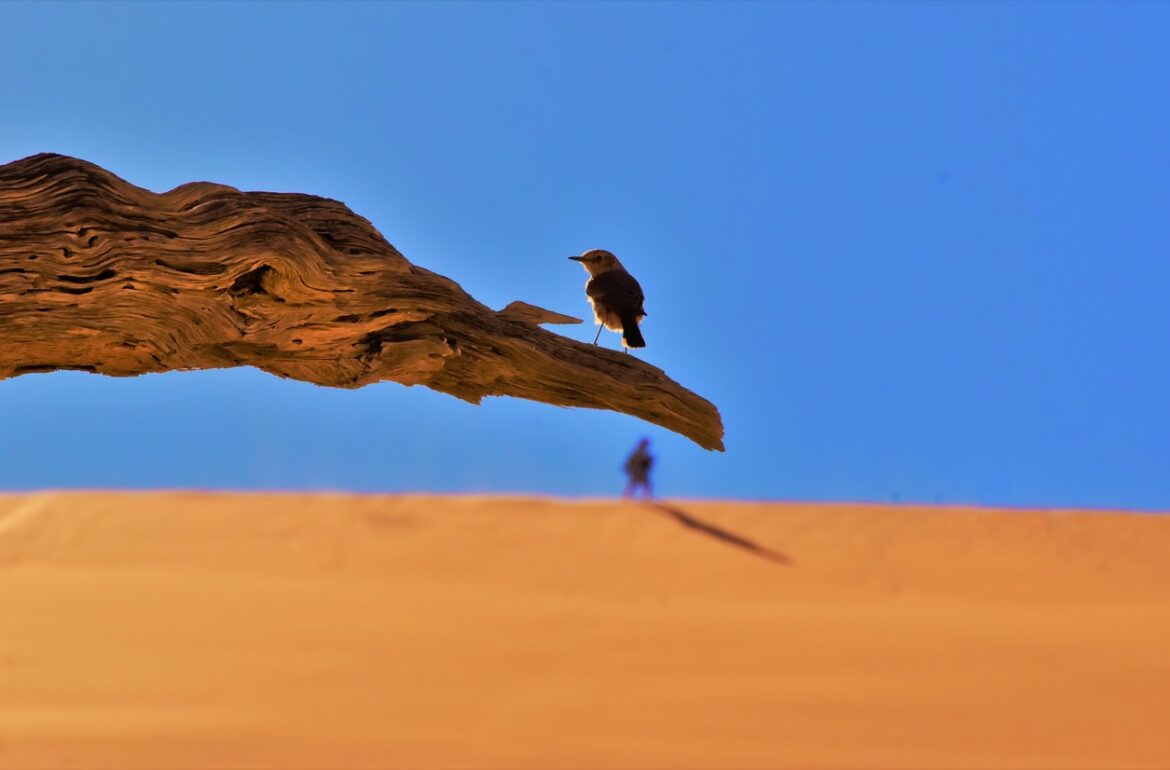During migration, birds cross large water fields as well as deserts. A study conducted with the participation of Estonian scientists refuted current knowledge and showed that, despite the hostile environment, birds make intermediate stops also when crossing deserts.
Stopping on large sea and desert areas is either difficult, impossible (bodies of water may not have suitable islands) or irrational (there might not be any food for restoring strength). That is why ornithologists have so far believed that birds do not make any stops when crossing deserts, for example.
Based on radar images taken over the last decades, however, it can be said that birds also stop in deserts on their migration route. Furthermore, it has been determined that many birds fly over the desert higher than usual to save energy because with every hundred metres of height, the air temperature drops by a degree, thus reducing water loss and the amount of energy needed for cooling the body: e.g., the great reed warbler (Acrocephalus arundinaceus) and the Eurasian hoopoe (Upupa epops) fly up to 5,000 metres above sea level. According to radar data, nocturnal bird migration over continental Europe occurs at 2,000 metres above ground, at 3,500–4,000 metres over the Sahara Desert in autumn, and up to 5,000 metres above ground over the Sahara in spring.
It was approximately known that passerines cross deserts at night and take breaks during the day. However, radars do not provide exact data, as they generally cannot differentiate between species. In the recent study, using light-sensitive sensors on birds, which register the rising and setting of the sun, it was found that different species use different strategies for crossing deserts and the strategies vary even among individuals from one species.
The study involving Estonian ornithologists Jaanus Elts and Riho Marja looked at 130 individuals from ten species (mostly ortolan buntings (Emberiza hortulana)) and showed that the majority of passerines stop in the desert during the day. Few species cross the desert in one go, e.g., in autumn, only 11% of birds: all three wood warblers (Phylloscopus sibilatrix), a third of tree pipits (Anthus trivialis), a quarter of willow warblers (Phylloscopus trochilus), one whinchat (Saxicola rubetra) and a spotted flycatcher (Muscicapa striata). Non-stop flights occur mainly during spring migration and this strategy is more often used by foliage gleaners. In spring, 44% of birds migrated during the day, generally followed by a nocturnal flight and often by a diurnal prolongation of the nocturnal flight – probably to cross the desert faster.
Wood warblers were the only ones to undertake a non-stop flight to cross the Sahara in autumn as well as spring, and in both cases, it took slightly over two nights and two days. All Eurasian reed warblers (Acrocephalus scirpaceus) and nightingales (Luscinia megarhynchos; except one individual in autumn), however, made at least one stop in Sahara in both seasons. The willow warbler, whinchat, nightingale, spotted flycatcher and the tree pipit had the most diverse migration strategies, as they included individuals performing only nocturnal flights, individuals prolonging their nocturnal flights into the morning (by 2–10 hours), but also those who flew through the entire duration of daylight.
Even though flying in the desert during daylight is more laborious, continuing nocturnal migration after sunrise is probably beneficial – in addition to faster desert crossing, birds can look for shaded areas for stopping during the hottest hours of the day, if necessary, in order to preserve water and feed. This may also explain why foliage gleaners try to cross the desert as fast as possible – there are few suitable places for them to stop.
Even though, based on the air temperature recorded by the sensors, passerines fly over the desert at a relatively high altitude, the deserts heating up due to climate change (by the end of the century, the temperature of deserts is estimated to rise by seven degrees) may primarily impact the species flying relatively low. As desert crossings vary within and between species, there probably is not one best universal strategy for it, as migration depends on the current conditions or the personality of the bird, and with the currently-known diversity of migration strategies, it is likely that passerines will be able to adapt to the changes.
Written by: Marko Mägi, University of Tartu
The article was originally published in the Estonian ornithology blog Linnuvaatleja. The translation of this article from Estonian Public Broadcasting science news portal Novaator was funded by the European Regional Development Fund through Estonian Research Council.
 Back
Back



